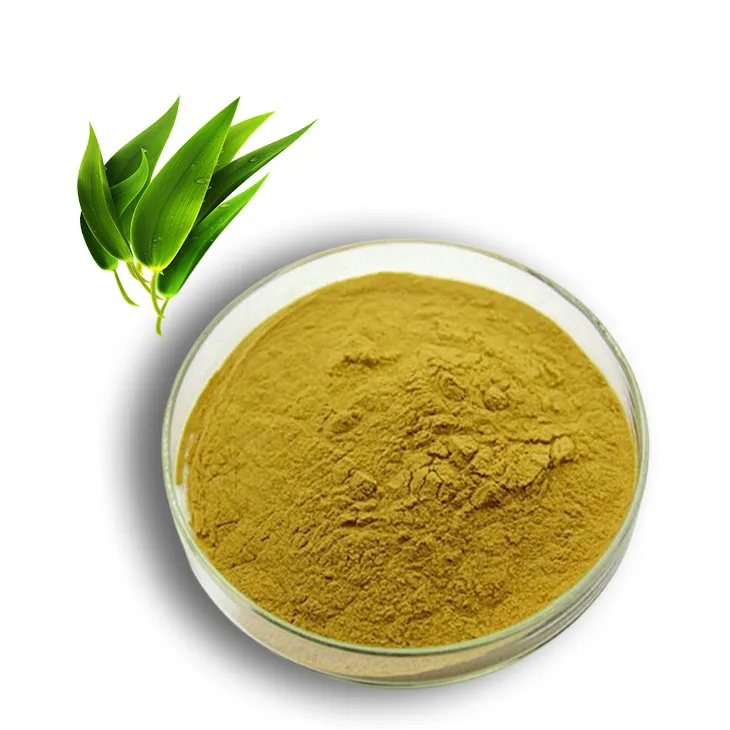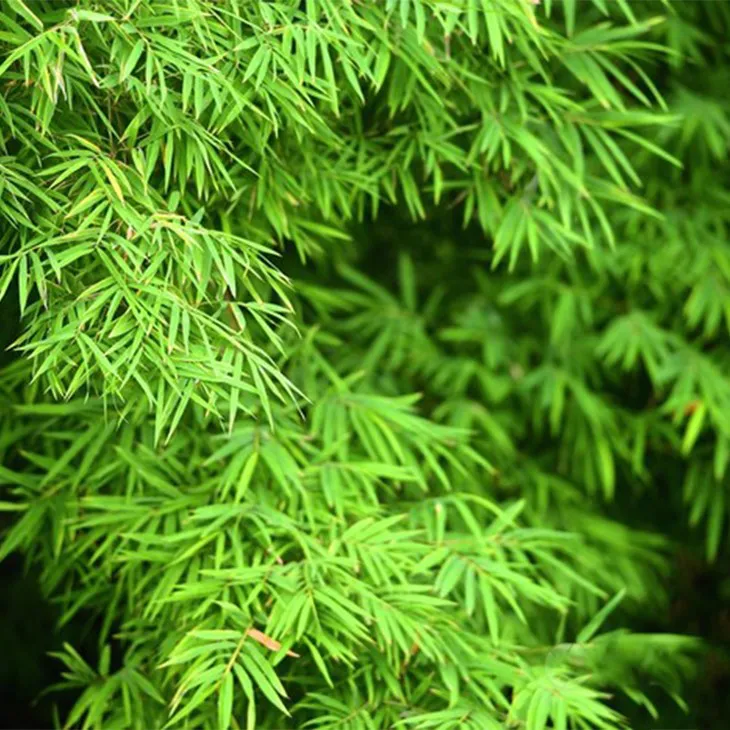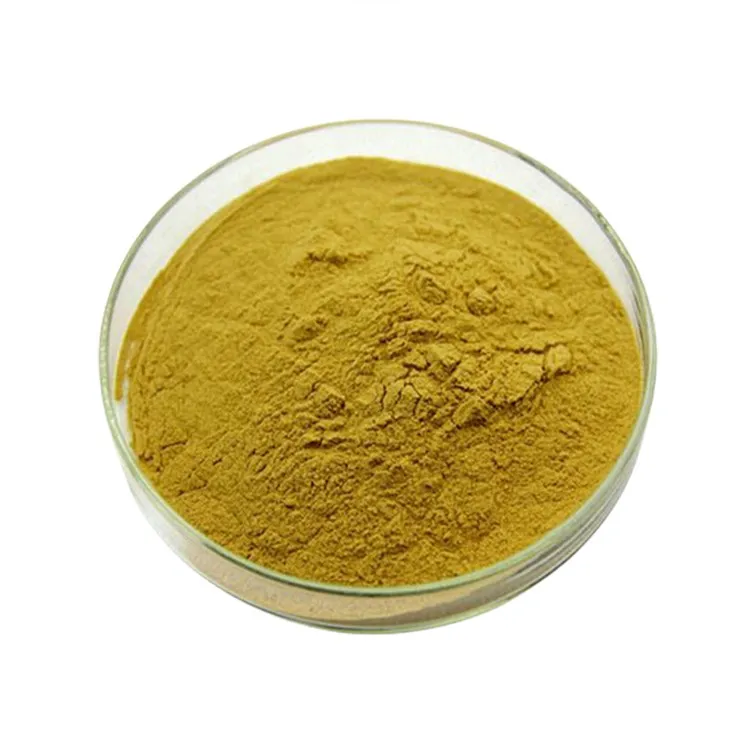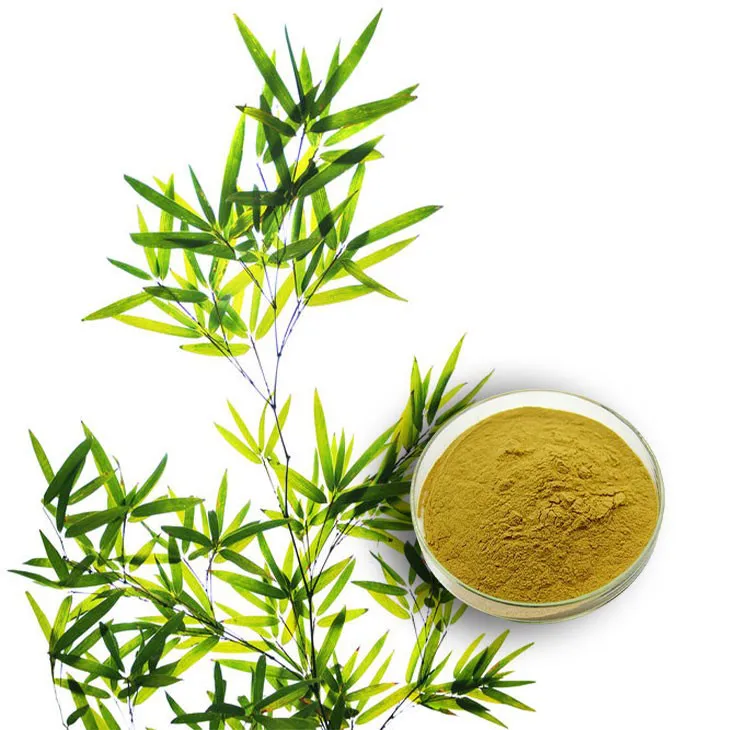- 0086-571-85302990
- sales@greenskybio.com
Bamboo Leaf Extract: China vs. the United States
2024-11-29

1. Introduction
Bamboo is a plant with a wide range of uses. Bamboo Leaf extract has drawn increasing attention due to its potential health benefits, such as antioxidant, anti - inflammatory, and antibacterial properties. China, known as the "Kingdom of Bamboo," has abundant bamboo resources. In contrast, the United States, with its advanced scientific research facilities, also shows certain advantages in related research. This article will compare the two countries in terms of extraction techniques, quality control, and commercial utilization of Bamboo Leaf extracts.

2. Bamboo Resources in China and the United States
2.1 China's Bamboo Resources
China has a long history of bamboo cultivation and utilization. It has the richest bamboo resources in the world, with a large number of bamboo species distributed across the country. Bamboo forests cover vast areas in southern China, providing a stable and sufficient raw material source for Bamboo Leaf extraction. The diverse bamboo species in China also offer a variety of chemical compositions in bamboo leaves, which is beneficial for different types of extraction and utilization.
2.2 The United States' Bamboo Resources
Compared with China, the United States has relatively fewer native bamboo resources. However, the United States has introduced some bamboo species for cultivation in certain areas. Although the scale is not as large as that in China, these introduced bamboo resources still provide a certain amount of raw materials for research and some small - scale commercial activities related to bamboo leaf extract.

3. Extraction Techniques
3.1 China's Extraction Techniques
In China, traditional extraction methods have been widely used for a long time. Solvent extraction is a common method. For example, ethanol is often used as a solvent to extract active ingredients from bamboo leaves. This method is relatively simple and cost - effective. In recent years, with the development of technology, some Chinese research institutions and enterprises have also begun to use supercritical fluid extraction technology. This method can effectively extract active ingredients under relatively mild conditions, reducing the damage to active ingredients and obtaining higher - quality extracts. Moreover, Chinese researchers are constantly exploring new extraction techniques based on traditional Chinese medicine extraction experience, aiming to improve the extraction efficiency and quality of bamboo leaf extracts.
3.2 The United States' Extraction Techniques
The United States, with its advanced scientific research level, mainly focuses on the application of high - tech extraction techniques. Molecular distillation is one of the techniques often used in the United States for bamboo leaf extract extraction. This method can separate and purify components with different molecular weights more precisely, which is very suitable for obtaining high - purity active ingredients from bamboo leaf extracts. In addition, the United States also uses some enzymatic hydrolysis - assisted extraction methods. Enzymes can break down cell walls more effectively, helping to release active ingredients. These advanced extraction techniques in the United States are often carried out in well - equipped laboratories, ensuring high - precision and reproducibility of the extraction process.

4. Quality Control
4.1 China's Quality Control
China has established a series of quality control standards for bamboo leaf extracts. At the national level, relevant standards regulate the content of main active ingredients, such as flavonoids, in bamboo leaf extracts. Chinese enterprises also have their own internal quality control systems. They usually conduct strict raw material selection, ensuring that the bamboo leaves used are of high quality and free from pollution. During the extraction process, regular quality inspections are carried out to monitor parameters such as extraction time, temperature, and solvent concentration. After the extraction is completed, the final product is also comprehensively tested for its appearance, purity, and activity to ensure that it meets the market quality requirements. In addition, China is also constantly improving its quality control standards in line with international standards to promote the internationalization of bamboo leaf extract products.
4.2 The United States' Quality Control
The United States has a very strict quality control system in the field of food and health products. For bamboo leaf extracts, the regulatory authorities require strict compliance with Good Manufacturing Practice (GMP) regulations. In the United States, quality control starts from the source of raw materials. The origin and quality of imported bamboo leaves are strictly monitored. In the extraction and production process, high - precision instruments are used to monitor various parameters to ensure the consistency and stability of product quality. The final product must pass a series of safety and efficacy tests before it can be marketed. The United States also emphasizes on traceability of products, which means that every step of the production process can be traced back to ensure product quality and safety.

5. Commercial Utilization
5.1 China's Commercial Utilization
China has a large domestic market for bamboo leaf extracts. These extracts are widely used in the fields of traditional Chinese medicine, health products, and cosmetics. In the traditional Chinese medicine field, bamboo leaf extracts are often used as ingredients in some prescriptions for treating heat - related diseases. In the health product market, bamboo leaf extract - based products are popular among consumers for their antioxidant and anti - fatigue functions. In the cosmetics industry, bamboo leaf extracts are added to some skin care products for their anti - inflammatory and antibacterial properties. Chinese enterprises are also actively exploring the international market, and China's bamboo leaf extract products have gradually gained recognition in some Asian, African, and European countries.
5.2 The United States' Commercial Utilization
In the United States, bamboo leaf extracts are mainly used in the health supplement and functional food markets. Due to the high - tech extraction and strict quality control, American - made bamboo leaf extract products are often positioned at the high - end of the market. These products are mainly sold in high - end health food stores and pharmacies. The United States also has a relatively mature marketing system, which can effectively promote the products to target consumers. However, compared with China, the United States has a relatively smaller scale of bamboo leaf extract utilization due to its limited domestic bamboo resources.
6. Conclusion
China and the United States have their own characteristics in the aspects of extraction techniques, quality control, and commercial utilization of bamboo leaf extracts. China, with its rich bamboo resources, combines traditional extraction methods with modern technology and has a large - scale domestic market. The United States, relying on its advanced research facilities, focuses on high - tech extraction and strict quality control, and targets high - end markets. In the future, both countries can learn from each other. China can further improve its scientific research level and quality control system by referring to the United States' advanced experience. The United States can also consider making better use of China's rich bamboo resources to expand the scale of bamboo leaf extract production and utilization. Through cooperation and exchanges, the development of the bamboo leaf extract industry in both countries can be promoted to a higher level.
FAQ:
Question 1: What are the main differences in extraction techniques of bamboo leaf extract between China and the United States?
In China, traditional extraction methods such as solvent extraction may be commonly used due to the long - standing experience with natural products. China may also utilize some indigenous techniques passed down through generations. In the United States, with advanced research facilities, there might be a greater emphasis on high - tech extraction methods like supercritical fluid extraction. This method offers advantages in terms of purity and efficiency. The United States may also be more likely to invest in the development of new and innovative extraction techniques based on modern scientific knowledge and engineering principles.
Question 2: How do quality control measures for bamboo leaf extract differ in China and the United States?
In China, quality control often adheres to national and industry - specific standards. There is a focus on ensuring that the bamboo source is of good quality, and traditional quality assessment methods may be combined with modern analytical techniques. In the United States, strict regulatory frameworks govern quality control. There is more emphasis on using advanced analytical instruments to precisely measure the composition and purity of the bamboo leaf extract. The United States may also require more comprehensive safety and efficacy testing in line with its regulatory requirements for dietary supplements and other products.
Question 3: What are the differences in commercial utilization of bamboo leaf extract in China and the United States?
In China, bamboo leaf extract may be more widely used in traditional Chinese medicine - related products, such as herbal teas and some traditional health products. It also has applications in the cosmetic industry, often with a focus on natural and traditional product concepts. In the United States, bamboo leaf extract is more likely to be incorporated into dietary supplements and functional foods. The marketing and commercialization in the United States tend to be more influenced by scientific research findings and consumer trends towards natural and health - promoting ingredients.
Question 4: Which country has more potential for the development of bamboo leaf extract in terms of resources and research?
China has an obvious advantage in terms of bamboo resources, with vast bamboo forests providing a rich and sustainable source of raw materials. However, the United States, with its advanced research facilities and strong scientific research capabilities, has great potential in the research and development of bamboo leaf extract. In the long run, both countries can complement each other. China can provide abundant resources, while the United States can contribute high - level research and development technologies.
Question 5: How do the regulatory policies for bamboo leaf extract in China and the United States affect its development?
In China, regulatory policies ensure the safety and quality of bamboo leaf extract in traditional Chinese medicine and related products. This helps to promote the healthy development of the industry within the framework of traditional medicine. In the United States, regulatory policies for dietary supplements and functional foods play a crucial role. They require manufacturers to provide evidence of safety and proper labeling. These policies influence the research, production, and marketing of bamboo leaf extract in the United States, and also affect its import and export in international trade.
Related literature
- Bamboo Leaf Extract: Properties and Potential Applications"
- "Advances in Natural Product Extraction: A Comparison between Different Regions"
- "Quality Control in Herbal Extracts: Global Perspectives"
- "Commercialization of Botanical Extracts in the United States and Asia"
- ▶ Hesperidin
- ▶ citrus bioflavonoids
- ▶ plant extract
- ▶ lycopene
- ▶ Diosmin
- ▶ Grape seed extract
- ▶ Sea buckthorn Juice Powder
- ▶ Beetroot powder
- ▶ Hops Extract
- ▶ Artichoke Extract
- ▶ Reishi mushroom extract
- ▶ Astaxanthin
- ▶ Green Tea Extract
- ▶ Curcumin Extract
- ▶ Horse Chestnut Extract
- ▶ Other Problems
- ▶ Boswellia Serrata Extract
- ▶ Resveratrol Extract
- ▶ Marigold Extract
- ▶ Grape Leaf Extract
- ▶ blog3
- ▶ blog4
-
Chinese Saffron Extract Powder Factory.
2024-11-29
-
Cactus Extract Supplier
2024-11-29
-
Optimal Bioavailability of Vitamin C.
2024-11-29
-
Extraction process of wheat germ extract.
2024-11-29
-
100% Pure Natural L - Theanine Powder.
2024-11-29
-
Sophora Japonica Flower Extract
2024-11-29
-
Almond Extract Powder
2024-11-29
-
Apricot Powder
2024-11-29
-
Diosmin
2024-11-29
-
Pueraria Lobata Extract
2024-11-29
-
Lily extract
2024-11-29
-
Lavender Extract
2024-11-29
-
Propolis Extract Powder
2024-11-29
-
Polygonum Cuspidatum Extract
2024-11-29
-
Phellodendron Extract
2024-11-29





















